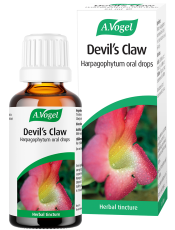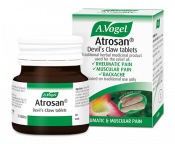All about zinc!
Do you struggle with an inflammatory condition? To find out if zinc could be helpful, this blog will look at some interesting questions:
- Is zinc anti-inflammatory?
- How does zinc reduce inflammation?
- How do you counter inflammation?
- How do you know if you're lacking zinc?
- How can I increase my zinc levels?
Is zinc anti-inflammatory?
Zinc is known to influence how the body responds to inflammation.
Our levels of this important nutrient can decline with age and, unfortunately, this may coincide with chronic inflammation.
You see, low levels of zinc seem to change how the immune cells that control inflammation act, thus resulting in the issue becoming more problematic.

How does zinc reduce inflammation?
Research has shown that low levels of zinc can increase the body's inflammatory response. In a 2015 study, a deficiency was seen to trigger the improper activation of immune cells and the abnormal function of a protein called cytokine IL-6, which is inflammatory.1
So, without zinc, the cells that control inflammation appear to activate and respond differently, causing the cells to promote more inflammation.
Also, recent research has indicated that zinc possesses anti-inflammatory activity. It works by inhibiting the signaling of a protein known as NF κB, and also by modulating T cell functions that may limit the effect of cells known as cytokines, which are associated with severe infections.2
| Would you like to know more about inflammation? Take a look at my blog on the causes of inflammation and the recommended treatments for additional tips and advice. |
Countering inflammation
To tackle inflammation, I highly recommend trying Devil's Claw.
This acts gently on most of the inflammatory pathways, reducing the likelihood of side effects because none of the pathways are completely blocked.
Devil's Claw works cumulatively, can be taken long-term, and isn't contraindicated with other anti-inflammatories or painkillers.
My Top Tip:

Our Devil's Claw tincture is easily absorbed by the body and is made from fresh herb extracts.
"Have been using for years & it works."
How do you know if you’re lacking zinc?
The recommended daily intake of zinc is 9.5mg for adult men and 7mg for adult women.
It is quite easy to become deficient in zinc. Many foods now have low levels as the soil is depleted of it; plus, certain groups may be at an increased risk of a deficiency. This includes:
- Older adults
- Those with an immune deficiency
- Anyone overweight or obese
- Diabetes sufferers
- Those with atherosclerosis (cardiovascular disease).
Stress and poor diet are other contributing factors in low zinc levels.
As zinc can influence a wide range of bodily processes and not just inflammation, a deficiency can result in various symptoms. These may include:
- Slow wound healing
- Skin rash
- Fatigue
- Hair loss
- Cracked lips
How can I increase my zinc levels?
By making some simple adaptations to your diet, it is possible to improve your zinc intake.
Here are my top dietary tips to help you get more zinc:
- Cook more eggs – whether you prefer them scrambled, boiled or made into an omelette, eggs provide a good dose of zinc
- Try wheat germ – this can be added to a variety of dishes including cereals, salads, smoothies and bread. You could even sprinkle a little on top of eggs for a snack totally rich in zinc
- Snack on cashew nuts – or try our coconut and cashew amazeballs for extra tasty flavour!
- Roast some pumpkin seeds - these are nice when mixed with a dash of soy sauce and Herbamare.
A supplement is another way to get a little more zinc into your system; however, watch out for supplements with high levels of the mineral. Ideally, we wouldn't want one with more than 15 mg daily, especially if you are taking it ongoing. Too much zinc can cause issues of its own, including nausea and loss of appetite.
If you want a little zinc top up, I would recommend our Balance Mineral Drink as it contains 30% of the recommended daily intake of zinc. This is alongside other nutrients that are helpful for the muscles and joints, including potassium and magnesium.
You can mix the Balance sachet in a little water, oat milk or a smoothie – whatever takes your fancy!





 Our Devil's Claw tincture is made from organically grown plant roots.
Our Devil's Claw tincture is made from organically grown plant roots. 

